Regenerative Application in Sugar Centrifuge
2017-06-08
Sugar Production Process
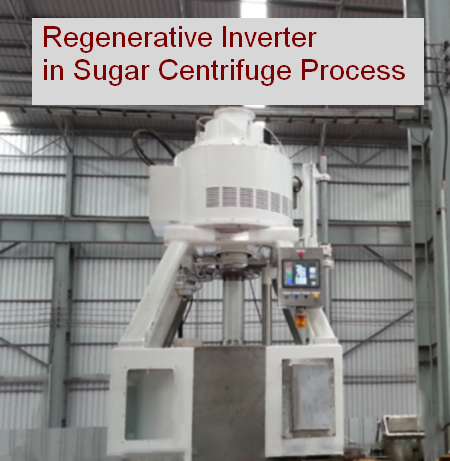
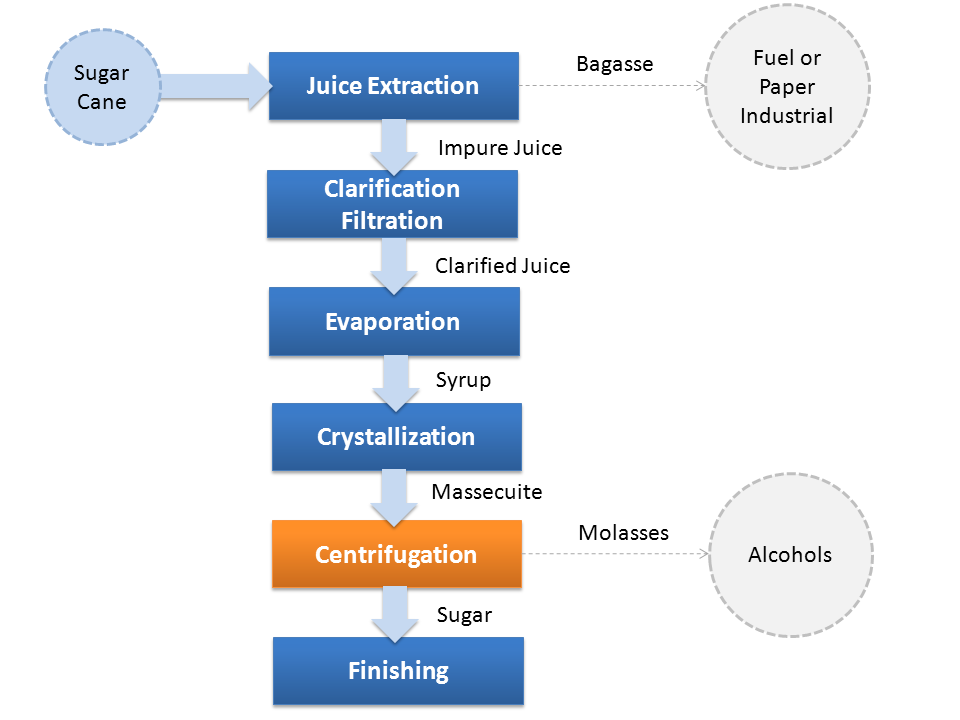
In sugar production process, the juice is separated from the bagasse by milling process and pumped away for processing into raw sugar. The bagasse is recycled as a fuel or paper industrial. Juice from the crushing mills contains impurities which are removed by adding lime and heating the limed juice. The clarified sugar juice is run off from the clarifier and concentrated by boiling it under vacuum pan called evaporators. The concentrated juice is called syrup(about 65-70 percent sugar) is seeded with small sugar crystals in a process called crystallisation. The sugar crystals are grown to the required size by adding more syrup while boiling continues. When the crystals reach the required size (approximately 1.0mm), the mixture of syrup and crystals called massecuite is discharged from the pan.
Syrup is separated from the raw sugar crystals in centrifuges, which spin at high speeds. The spun-off syrup is boiled again and more raw sugar crystals are recovered. Molasses is the black syrup left over from the final centrifuge. The raw sugar from the centrifuge is dried by tumbling through a stream of air in a rotating drum. The raw sugar is then transferred for short-term storage in bulk bins.
Using regeneration with adjustable frequency drives to return energy to the AC power
In the centrifuges process, to separate the massecuite into raw sugar crystals and molasses is done in revolving machines called centrifugal. It is starting at 100 rpm and then turning at about 200 rpm load with hot concentrate. It then accelerates to 1200 rpm to spin out the molasses and leaving the sugar crystals behind. The centrifuge is then slowed to 100 rpm for unloading, this duty cycle, machine is in regenerative braking mode. The cycle takes about 3 minutes, then repeats.
In the braking mode, inverter adjusts to lower frequency and voltage then energy in the process or the motor load overhauls the power of the motor, the motor acts as an generator to convert the kinetic energy into electricity and passed back through the inverter section. The conventional inverter based on the dynamic braking resistor dissipates that regenerated energy as wasted heat. Centrifuges all cyclically generate electricity for their motors from the kinetic energy accumulated during their main movement. This energy has to be properly controlled and managed. FRECON - iHRG Series is the Regenerative inverter, Its technology can feed that energy back into the power mains as three-phase AC instead of wasting it as heat. The regenerative energy that would have had to feed back into the the electric utility, benefit to reduces the kWh consumption and therefore the electricity bill as well.

FRECON-iHRG Inverter
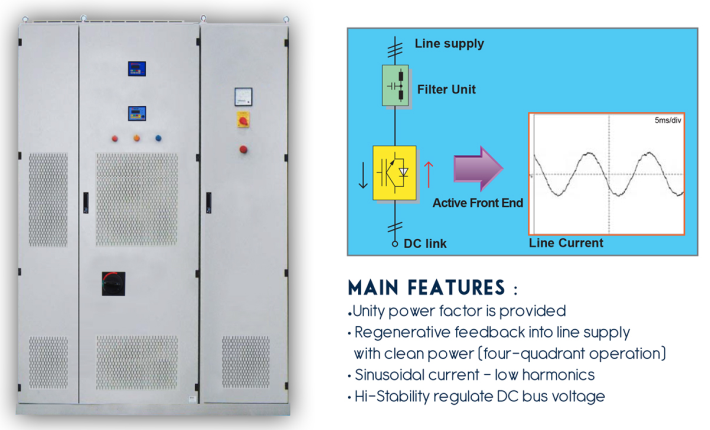
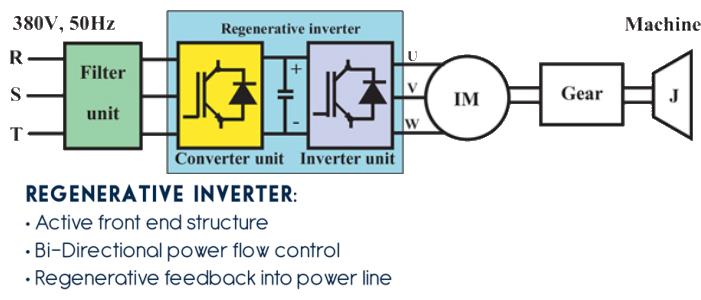
Example of Application in Sugar Centrifuge Process
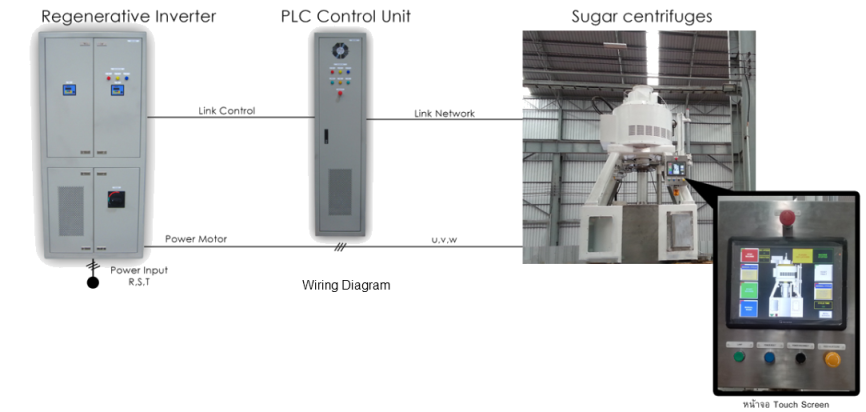
Energy Saving with FRECON-iHRG Regenerative Inverter
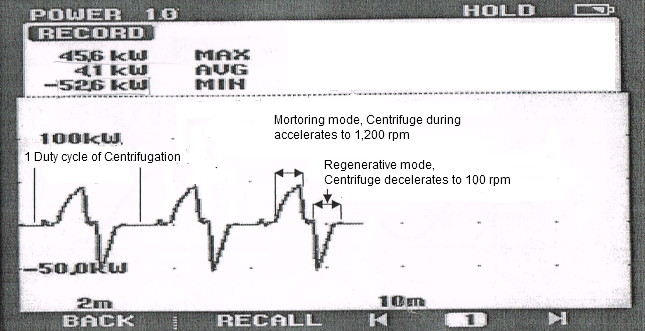
Power consumption of Sugar Centrifuge 200HP controlled by
FRECON-iHRG measured at input of Regenerative inverter
Energy consumption calculation
Motoring Mode: 200rpm→1200 rpm , Power max 45.6kW duty cycle 40s
thus, estimated energy consumption = 45.6 kW x 3 Phase x 40/3600 hr. = 1.518 kWh
Regenerative Mode: 1,200rpm → 100rpm, P min -52.6 kW duty cycle 30s
thus, estimated energy regeneration = -52.6 kW x 3 Phase x 30/3600 hr. = 1.315 kWh
Total consumption energy = 1.518 – 1.315 = 0.203 kWh/ cycle (Energy saving ~ 86%)


